Yu-Ting Li
PGT-Net: Progressive Guided Multi-task Neural Network for Small-area Wet Fingerprint Denoising and Recognition
Aug 14, 2023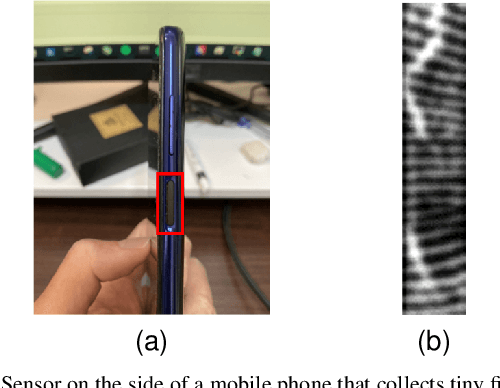
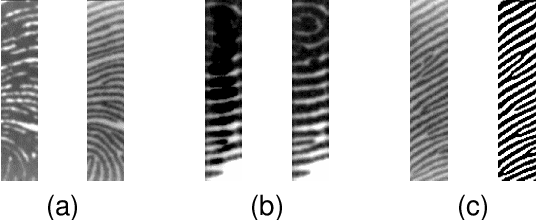
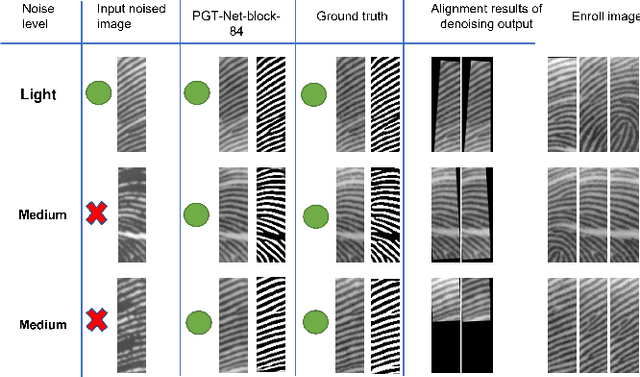
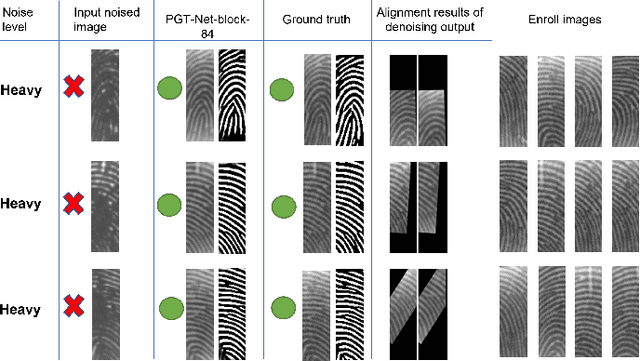
Abstract:Fingerprint recognition on mobile devices is an important method for identity verification. However, real fingerprints usually contain sweat and moisture which leads to poor recognition performance. In addition, for rolling out slimmer and thinner phones, technology companies reduce the size of recognition sensors by embedding them with the power button. Therefore, the limited size of fingerprint data also increases the difficulty of recognition. Denoising the small-area wet fingerprint images to clean ones becomes crucial to improve recognition performance. In this paper, we propose an end-to-end trainable progressive guided multi-task neural network (PGT-Net). The PGT-Net includes a shared stage and specific multi-task stages, enabling the network to train binary and non-binary fingerprints sequentially. The binary information is regarded as guidance for output enhancement which is enriched with the ridge and valley details. Moreover, a novel residual scaling mechanism is introduced to stabilize the training process. Experiment results on the FW9395 and FT-lightnoised dataset provided by FocalTech shows that PGT-Net has promising performance on the wet-fingerprint denoising and significantly improves the fingerprint recognition rate (FRR). On the FT-lightnoised dataset, the FRR of fingerprint recognition can be declined from 17.75% to 4.47%. On the FW9395 dataset, the FRR of fingerprint recognition can be declined from 9.45% to 1.09%.
D-STAR: Dual Simultaneously Transmitting and Reflecting Reconfigurable Intelligent Surfaces for Joint Uplink/Downlink Transmission
Jul 30, 2023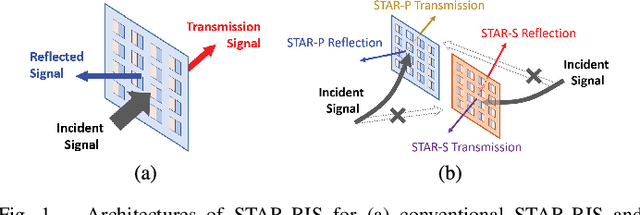



Abstract:The joint uplink/downlink (JUD) design of simultaneously transmitting and reflecting reconfigurable intelligent surfaces (STAR-RIS) is conceived in support of both uplink (UL) and downlink (DL) users. Furthermore, the dual STAR-RISs (D-STAR) concept is conceived as a promising architecture for 360-degree full-plane service coverage including users located between the base station (BS) and the D-STAR and beyond. The corresponding regions are termed as primary (P) and secondary (S) regions. The primary STAR-RIS (STAR-P) plays an important role in terms of tackling the P-region inter-user interference, the self-interference (SI) from the BS and from the reflective as well as refractive UL users imposed on the DL receiver. By contrast, the secondary STAR-RIS (STAR-S) aims for mitigating the S-region interferences. The non-linear and non-convex rate-maximization problem formulated is solved by alternating optimization amongst the decomposed convex sub-problems of the BS beamformer, and the D-STAR amplitude as well as phase shift configurations. We also propose a D-STAR based active beamforming and passive STAR-RIS amplitude/phase (DBAP) optimization scheme to solve the respective sub-problems by Lagrange dual with Dinkelbach transformation, alternating direction method of multipliers (ADMM) with successive convex approximation (SCA), and penalty convex-concave procedure (PCCP). Our simulation results reveal that the proposed D-STAR architecture outperforms the conventional single RIS, single STAR-RIS, and half-duplex networks. The proposed DBAP in D-STAR outperforms the state-of-the-art solutions in the open literature.
 Add to Chrome
Add to Chrome Add to Firefox
Add to Firefox Add to Edge
Add to Edge